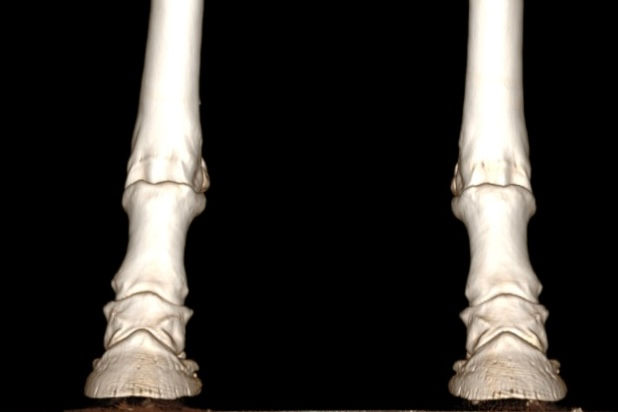Hold Still: The Hidden Dangers of Poor Farrier Manners—and How to Fix Them
- Rocking Speer Ranch, LLP Farrier Services

- Jun 1
- 3 min read
Updated: Jun 1

When a 1,200-pound animal decides to jerk a leg, strike, or rear while under a farrier's care, it's not just inconvenient—it can be lethal. Horses that don’t stand quietly for the farrier put not only the hoof care professional at risk, but also themselves. Yet, far too often, dangerous behavior during farrier work is overlooked, dismissed as “just how they are,” or worse, blamed on the farrier. In reality, most of these behaviors are preventable with proper handling, preparation, and training.
The Danger Is Real: Farriery Among the Most Hazardous Jobs
According to the U.S. Bureau of Labor Statistics and corroborated by multiple occupational safety studies, farriery ranks among the most dangerous professions. One report noted that over 80% of farriers report being seriously injured on the job, with injuries ranging from concussions and broken bones to lacerations and nerve damage.[1]
A 2009 survey conducted by the American Farrier’s Association (AFA) found:
67% of farriers had sustained injuries severe enough to require medical attention.
43% had suffered broken bones directly from a horse’s behavior.
29% had been kicked during routine hoof care.
The most common contributing factors were untrained horses and inattentive handling.[2]
When a horse pulls a leg away unexpectedly, the farrier—often bent over in a vulnerable position—can be thrown off balance or yanked violently, leading to back injuries or even being trampled. Rearing or striking during front limb work poses significant risks to the face and head. Even “dancing” or shifting weight constantly increases fatigue and injury risk to the farrier.
What “Good” Looks Like: The Ideal Stance
A well-mannered horse for the farrier stands:
Squarely on all four legs, or shifts calmly as asked.
Drops its head in a relaxed posture.
Picks up each foot willingly and without force.
Holds the foot still or rests it in the farrier's hand or stand without pulling or jerking.
Responds to quiet cues from the handler.
This isn’t just a pipe dream—it's trainable behavior.

Why Horses Misbehave for the Farrier
There are three major root causes of poor farrier manners:
Lack of Handling – Young horses or those not accustomed to hoof handling may panic when asked to yield a foot.
Fear or Pain – Prior injuries, bad experiences, or undiagnosed pain (e.g., hock or stifle issues) can make standing still or picking up feet uncomfortable.[3]
Poor Training or Reinforcement – Inconsistent expectations or rewarding bad behavior (letting go of the foot when the horse pulls) teaches the horse that acting out “works.”
How to Fix It: Training Tips for Better Farrier Manners
1. Daily Foot Handling
Start with calm, consistent sessions where each foot is picked up, held, and released gently. Use a countdown—pick up, hold for 5 seconds, release—then increase duration. Reward calmness, not movement.
2. Desensitize to Tools and Posture
Use a hoof stand, rasp, and even simulate tapping or nailing with a spoon. Gradually introduce the sound and feel of these tools without actually shoeing.
3. Groundwork First
Establish clear boundaries and respect on the ground. A horse that won’t stand still for grooming or haltering won’t magically stand still for a farrier.
4. Get Vet Involved if Pain Is Suspected
Don’t label a horse “bad” if they’re reacting to pain. Have a vet evaluate any horse that consistently struggles with lifting certain legs or shifting weight uncomfortably.
5. Work with the Farrier—Not Against
ThemAsk your farrier what your horse struggles with. Many are happy to give feedback or suggest pre-shoeing exercises.
Preventative Measures Save Lives—and Jobs
Repeated injuries drive experienced farriers out of the profession. The industry is already struggling with a shortage of competent hoof care providers, and the danger factor is a major contributor. As owners, we owe it to the horse—and to the professionals who keep them sound—to ensure they are well-prepared and safe to work on.
Conclusion
Standing well for the farrier is not optional. It is a life skill that protects both horse and human. Horses that jerk, kick, strike, or fidget aren’t just being difficult—they’re putting lives and livelihoods at risk. Through consistent training, clear expectations, and honest assessment of discomfort, we can change the story. It’s not about forcing compliance—it’s about building trust, consistency, and safety for all involved.
References
U.S. Bureau of Labor Statistics. (2022). "Nonfatal Occupational Injuries and Illnesses Requiring Days Away From Work."
American Farrier’s Association. (2009). "Injury Survey of U.S. Farriers."
Dyson, S. (2011). "Pain and Performance in the Horse." Veterinary Clinics of North America: Equine Practice.
American Association of Equine Practitioners (AAEP). (2017). “Safe Handling and Farriery Recommendations.”
Buff, E. (2020). “Farrier Safety and Horse Behavior.” American Farriers Journal.



Comments